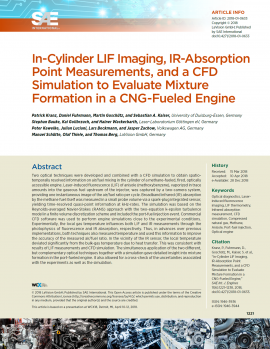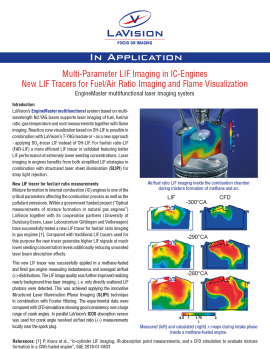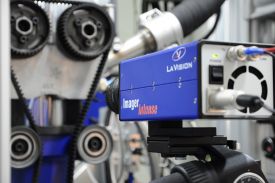
Laser Imaging in Engines
LaVision’s EngineMaster laser imaging systems provide information on fuel injection, mixture preparation, pre-combustion, flame species, NO formation and soot production. In-cylinder flow fields are measured with our FlowMaster PIV systems. Crank angle resolved in-cylinder laser imaging is performed on pulsed laser light sheets in optical engines or applying keyhole imaging using minimal invasive endoscopes.
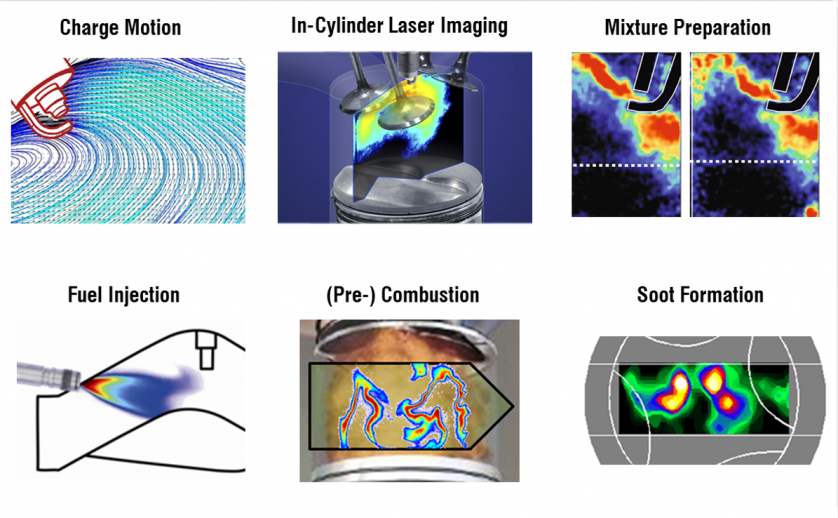
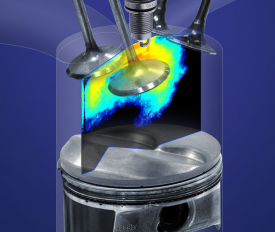
EngineMaster Multifunctional
Laser Imaging System
LaVision’s EngineMaster Multifunctional system supports fuel injection and evaporation studies, mixture formation (%lambda%-maps) and end gas temperature measurements, imaging of knock centers and soot formation processes.
For all laser imaging applications a pulsed multi-wavelength Nd:YAG laser is the standard light source. Only by changing the emission filter in front of the camera the desired in-cylinder process can be investigated. The crank angle resolved measurements are synchronized with the encoder signal of the engine supporting all engine operation modes such as cold start, skip-fired and acceleration modes.
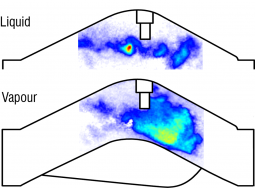
liquid-vapor seaparation
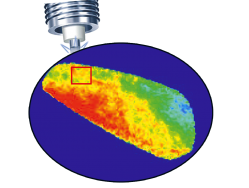
gas temperature, EGR recirculation
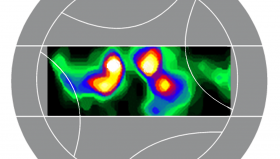
with detection limits in the ppb-range
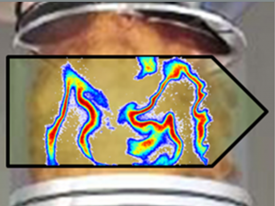
In-Cylinder LIF Imaging of Flame Species
For the detection of all LIF-active diatomic flame species such as OH, NO, CH, CN a dye laser is added to the multi-functional EngineMaster system. Flame front visualization (OH-LIF), pollutant formation (NO-LIF) as well as the location of knock centers (HCHO-LIF) are the main targets for these tunable LIF imaging techniques.
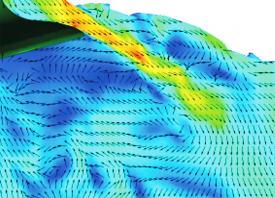
Image courtesy: University of Duisburg
In-Cylinder Flow Visualization: Charge Motion
For the analysis of in-cylinder charge motion LaVision’s FlowMaster PIV systems are well established in the automotive industry.
Predefined crank angle resolved flow fields with cycle statistics as well as high-speed PIV movies of the in-cylinder charge motion during mixture formation are recorded applying state-of-the-art PIV strategies incl. dynamic double-frame (dt) sampling.
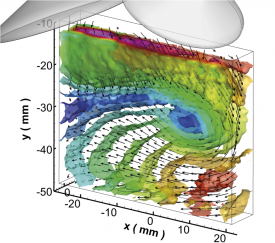
Image courtesy: TU-Darmstadt
Engine Synchronization: Crank Angle based Imaging
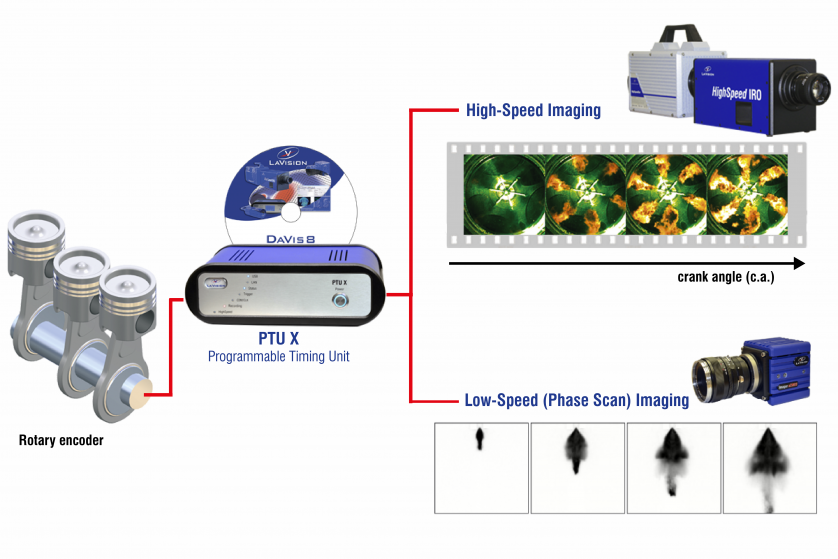
LaVision’s PTU timing unit is the universal synchronization interface between the laser imaging system and the engine supporting all engine operation modes including engine start, skip-fired and acceleration modes.
From Optical Engines to Endoscopic Imaging

While optical engines offer unlimited optical access for laser imaging applications, endoscopic keyhole imaging can be realized in slightly modified production engines featuring two small optical ports one for the laser endoscope and one for the camera endoscope.

